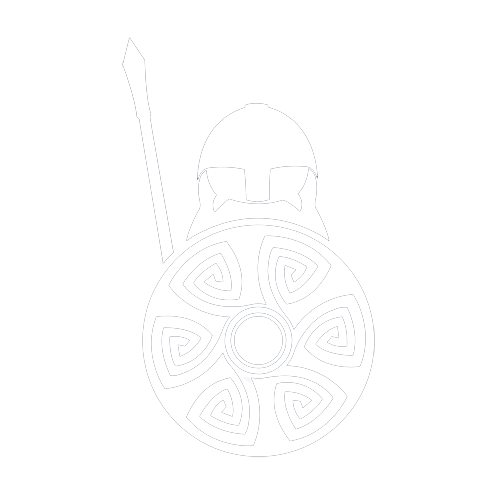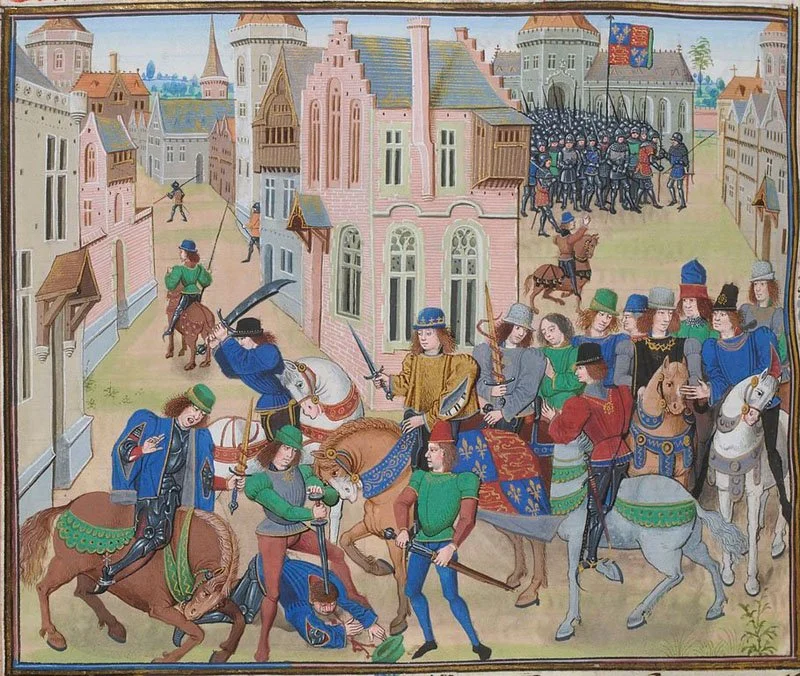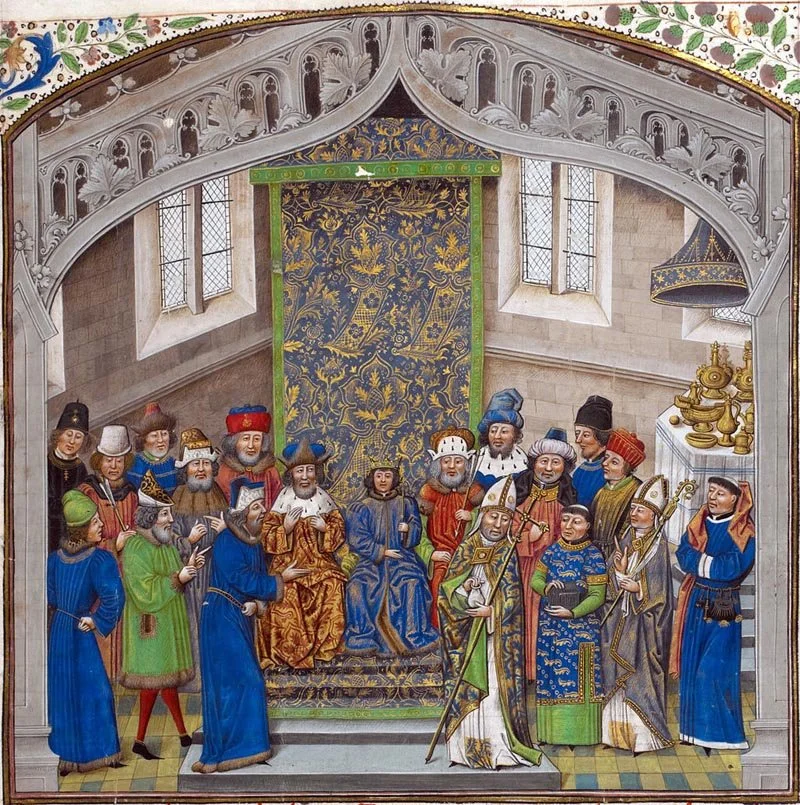King Richard II the Despotic Ruler
King Richard II was the second son of Edward the Black Prince and Joan of Kent. He began his reign at the tender age of 10. At just 14, he successfully faced down the Peasants' Revolt, but this encouraged his inner belief that kings should rule with absolute power. A dogmatic, extravagant and despotic ruler, Richard II failed to gain the loyalty of his barons. King Richard II was overthrown and forced to abdicate, leading to his imprisonment and death.
| Born | 6 January 1367, Bordeaux, France |
| Parents | Edward the Black Prince and Joan of Kent |
| Married | Anne of Bohemia and Isabella of Valois |
| Children | None |
| Died | 14 February 1400, Pontefract Castle, Yorkshire (33) |
| Reign | 1377 - 1399 (22) |
| Crowned | 16 July 1377, Westminster Abbey (10) |
| Predecessor | Edward III (grandfather) |
| Successor | Henry IV (cousin) |
| House | Plantagenet |
Life Events of King Richard II
1367
On 6 January, Richard II is born to Edward the Black Prince and Joan of Kent. His country was in turmoil from the effects of the plague and wars with Scotland and France.
1377
Richard II succeeds Edward III, his grandfather at 10 years old. But as he is so young, his uncles John of Gaunt and Thomas of Gloucester rule as regents, until he comes of age.
1381
In June, Wat Tyler leads the Peasants’ Revolt of common men from Kent and Essex, who can no longer live with the extortionate taxation imposed on them. They plunder and murder their way to London.
1381
King Richard II meets the rebels, and manages to diffuse the revolt, despite the leader, Wat Tyler, being killed.
1385
King Richard II leads an army into Scotland, but finds no enemy to fight. So he turns around and returns to England.
1386
The Lords Appellant is formed by 5 disgruntled barons, including the king’s uncle, Thomas Duke of Gloucester, and his cousin, Henry Bolingbroke.
1387
The Lords Appellant, led by Thomas Duke of Gloucester, takes control of the government and continues to do so for the next 2 years.
1388
The Lords Appellant presides over the ‘Merciless Parliament’, and executes King Richard II’s close circle.
1389
King Richard II takes back direct control of the government, with a majority, and imposes extravagance and culture in court.
1394
Richard II sets sail, leading an army to conquer and subdue West Ireland. He also negotiates a 30 year truce with France.
1396
Richard II takes the 7 year old daughter of the king of France, as his wife.
1397
Henry Bolingbroke is exiled for 10 years by Richard II, in revenge against the Lords Appellant. Five lords are executed of exiled, and their lands are seized by the king.
1399
John of Gaunt dies, his son Henry Bolingbroke, becomes Duke of Lancaster. But King Richard II seizes Bolingbroke’s lands and extends his exile.
1399
While Richard II is in Ireland, Henry Bolingbroke returns from exile, with support from the king’s barons, and reclaims his land and claims the throne of England.
1399
In August, King Richard II surrenders and imprisoned in the Tower of London. By September, Richard II abdicated and was moved to Pontefract castle.
1400
Richard II dies at Pontefract castle, possibly from starvation.
Interesting Facts About King Richard II
Ascension to the Throne
Richard II became king at the young age of 10 in 1377, following the death of his grandfather, King Edward III. He was the youngest English monarch to accede to the throne.The Peasants' Revolt
In 1381, Richard II faced a major challenge in the form of the Peasants' Revolt. Led by Wat Tyler, the revolt was a response to various issues, including high taxes and oppressive labour conditions. Despite his young age, Richard II displayed bravery and diplomatic skills by meeting with the rebels and promising reforms.Personal Rule
In 1389, Richard II successfully asserted his authority and took personal control of the government, sidelining his uncle, John of Gaunt, and other powerful nobles. This period of personal rule allowed him to implement reforms and pursue policies that he believed would strengthen his kingship.Downfall and Deposition
Richard II's reign ended in tragedy. He faced increasing opposition from powerful nobles, including his cousin Henry Bolingbroke (later Henry IV). In 1399, while Richard was away in Ireland, Bolingbroke returned to England, gathered support, and overthrew Richard II, ultimately leading to his deposition and imprisonment in the Tower of London.Mysterious Death
Richard II's fate remains a subject of speculation and mystery. In 1400, while imprisoned, he died under suspicious circumstances at the age of 33. The official account stated that he starved to death, but rumours persisted that he was murdered.
Battles Fought By King Richard II
Battle of Radcot Bridge
On 19 December 1387, this battle (not fought by Richard II personally), was a significant event during his reign. It was part of the conflict known as the ‘Merciless Parliament’, where rebel forces clashed with the troops of the king's favourite, Robert de Vere. The rebels were defeated, and Richard II regained control.Battle of Otterburn
On 5 August (possibly 19 August) 1388, while Richard II did not participate, this battle had significant implications for England. It was fought between the English forces led by Harry ‘Hotspur’ Percy and the Scottish forces led by Sir James Douglas. The Scots were victorious, with the English suffering heavy losses.
FAQs About the King
How old was Richard II when he became king?
Richard II became king of England at the age of 10 in 1377 after the death of his grandfather, King Edward III.What was King Richard II's relationship with his nobles?
Richard II had a complex relationship with his nobles. His reign was marked by power struggles and conflicts with influential noblemen, such as his cousin Henry Bolingbroke, later King Henry IV.What led to Richard II's downfall and deposition?
Several factors contributed to Richard II's downfall. These include his autocratic rule, financial mismanagement, conflicts with the nobility and the perception that he favoured his favourites over other nobles. This ultimately led to his deposition by Henry Bolingbroke in 1399.Did Richard II have any significant accomplishments during his reign?
King Richard II was known for his patronage of the arts and his interest in chivalry. He commissioned architectural projects, including the construction of Westminster Hall, and supported writers and poets of the time.What was Richard II's relationship with the Peasants' Revolt?
During the Peasants' Revolt of 1381, Richard II displayed bravery by meeting with the rebel leader, Wat Tyler, and making promises of reform. However, once the revolt was suppressed, he revoked those promises and dealt harshly with the rebels.How did King Richard II die?
The circumstances surrounding Richard II's death remain mysterious. Official accounts state that he starved to death while imprisoned in Pontefract Castle, but rumours of his murder persisted.
Death Of Wat Tyler
King Richard II - Coronation




